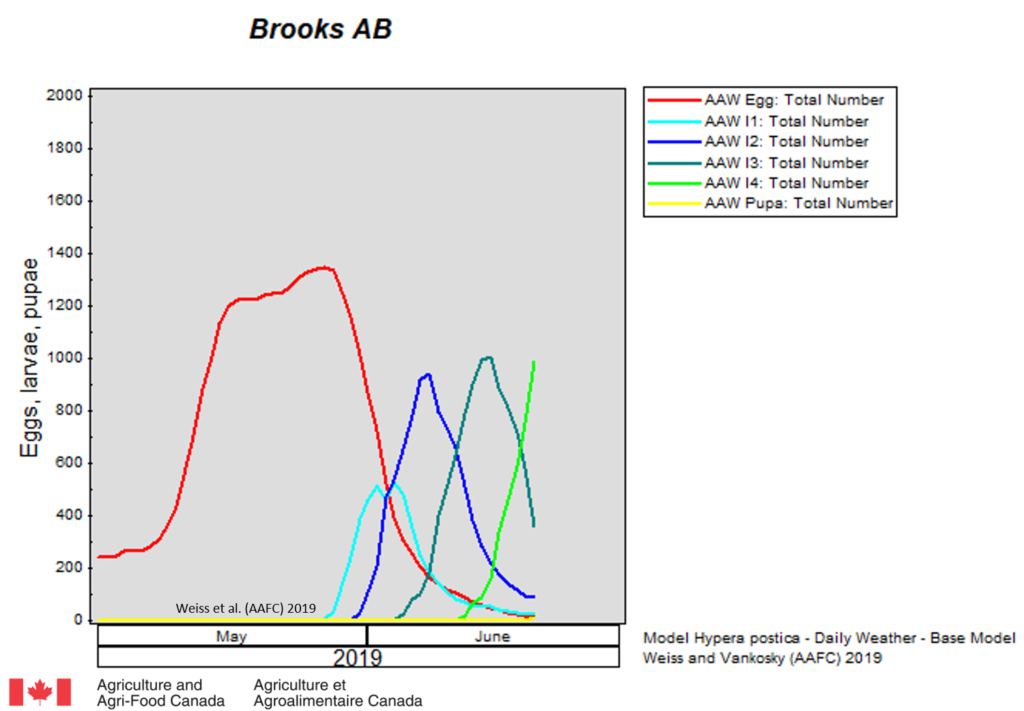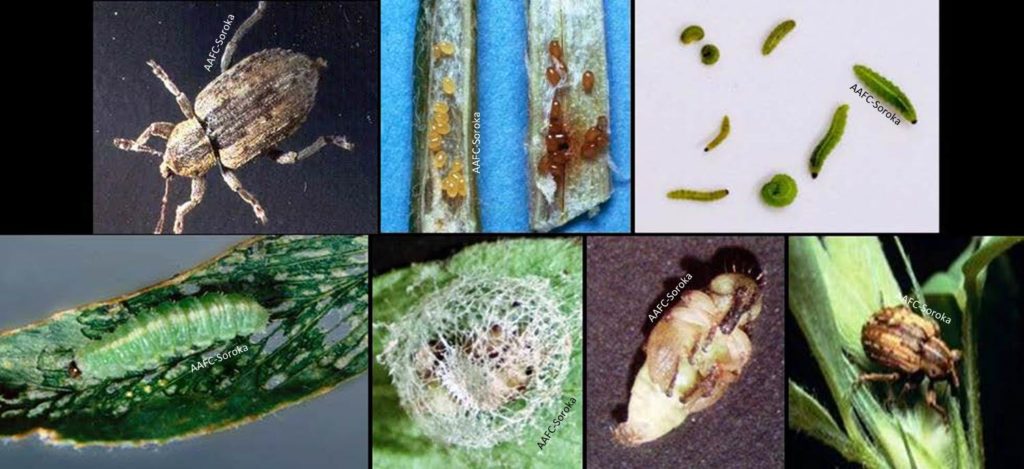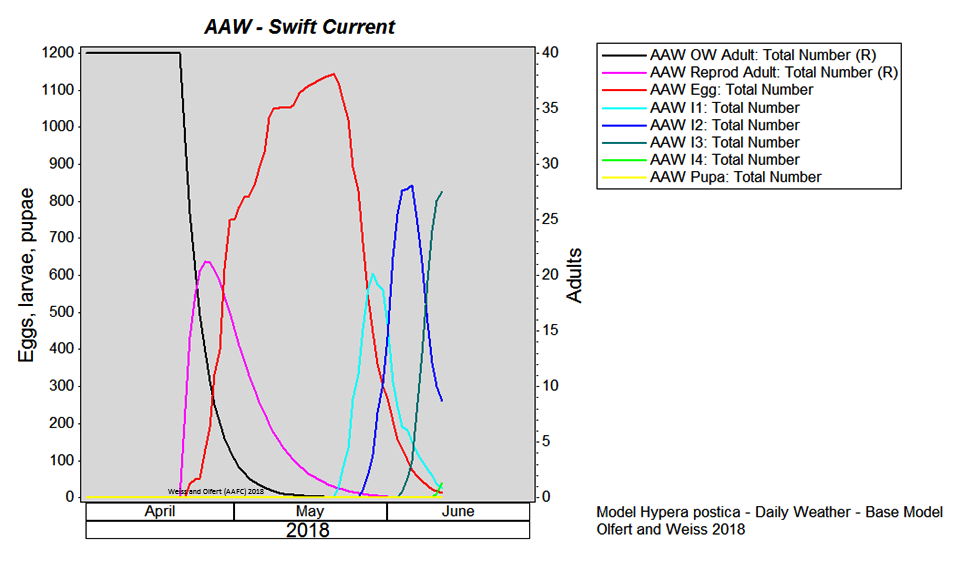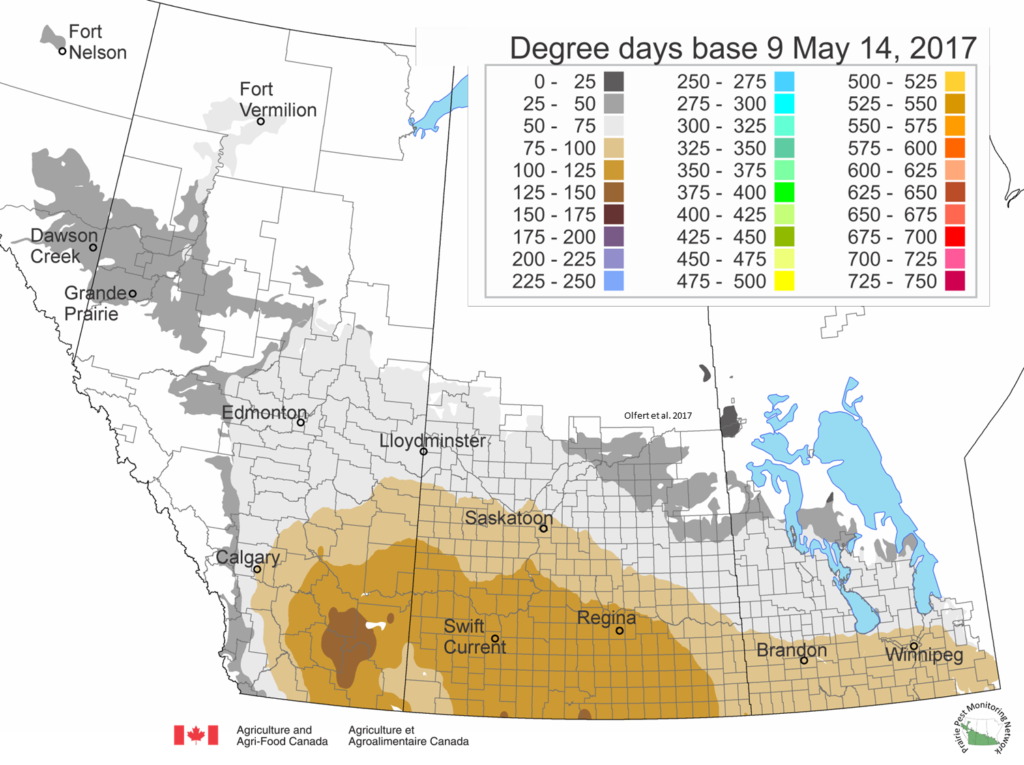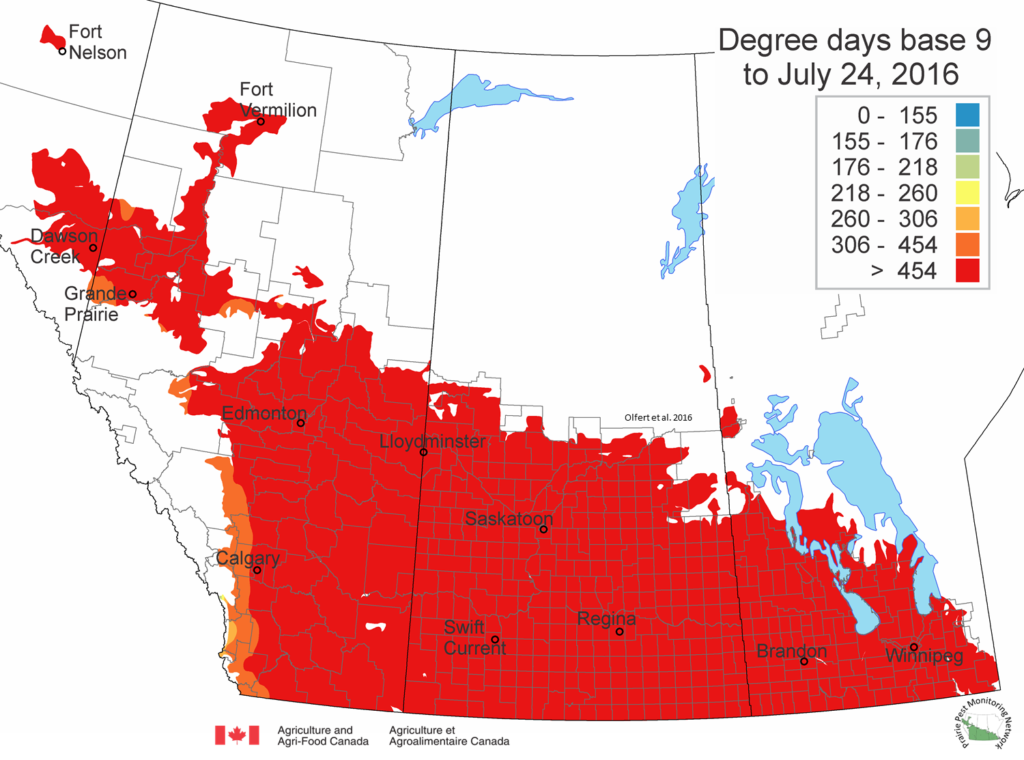*Text for this post prepared by Priyatha Sundaran, Sharavari Kulkarni and Maya Evenden, from the University of Alberta.
Dr. Maya Evenden’s lab in the Department of Biological Sciences at the University of Alberta researches insect behaviour, chemical ecology and integrated pest management. They study how insects orient and maneuver in their environment and exploit that knowledge for the development of IPM tactics. This summer the Evenden lab has multiple agriculture-based projects targeting diamondback moth, flea beetles, pea leaf weevil and alfalfa weevil. Here we highlight the work of an MSc student, Priyatha Sundaran, and a postdoctoral fellow, Dr. Sharavari Kulkarni.
Priyatha’s research focuses on the presence and distribution of alfalfa weevil (Hypera postica), in alfalfa grown for seed in southern Alberta. The study also assesses the diversity of Sitona spp. in sampled alfalfa fields. In three field seasons, alfalfa weevils have been sampled with soil and sweep samples, and emergence and pit fall traps. Soil samples at the beginning and end of each crop season estimate the density of alfalfa weevils in the soil over the winter. Sweep net samples can collect both larvae and adults to monitor alfalfa weevil density in the field for timely use of insecticides. Pitfall trap capture can indicate weevil movement in and out of the field over the course of the growing season. Emergence cages assessed the overwintering locations of weevils inside and outside the field. Initial results reinforce the effectiveness of sweep net sampling to monitor alfalfa weevil populations with peak larval activity in June-July. Alfalfa weevils were captured in equal numbers in pitfall traps placed at the edge and in the interior of the field suggesting that alfalfa weevils remain within alfalfa fields, unlike in other parts of their range. Sitona spp. bycatch consisted mostly of alfalfa curculio (Sitona lineellus) and pea leaf weevil (Sitona lineatus).

Sharavari’s research focuses on developing weather-based stage-structured predictive models for two important canola pests, striped flea beetles, (Phyllotreta striolata (Fab.)) and crucifer flea beetles (Phyllotreta cruciferae (Goeze)). Flea beetles are oligophagous species feeding mainly on canola (Brassica napus L. and Brassica rapa L.) and mustard (Brassica juncea L.). Sharavari used field surveys to assess local phenology and laboratory bioassays to study the effect of temperature on beetle development and interspecific competition between the two species. The flea beetle surveys were conducted in the spring (pre-seeding) and fall of 2021, 2022 and 2023 across 20+ canola fields throughout Alberta. Season-long, site-specific weather data was collected for modeling and validation. None of the available monitoring methods provides accurate forecasting for flea beetles, and weather-based phenology models can help producers make informed decisions on timing and the need to apply foliar insecticides for flea beetle management. Lab assays showed a dramatic effect of temperature on the time and success of egg hatch and development time from egg to adult. On-going lab work is testing for plant-mediated interactions between the two species to understand if P. cruciferae prefers to feed and oviposit on plants previously damaged by P. striolata and to determine if inter-species interactions have fitness costs.










